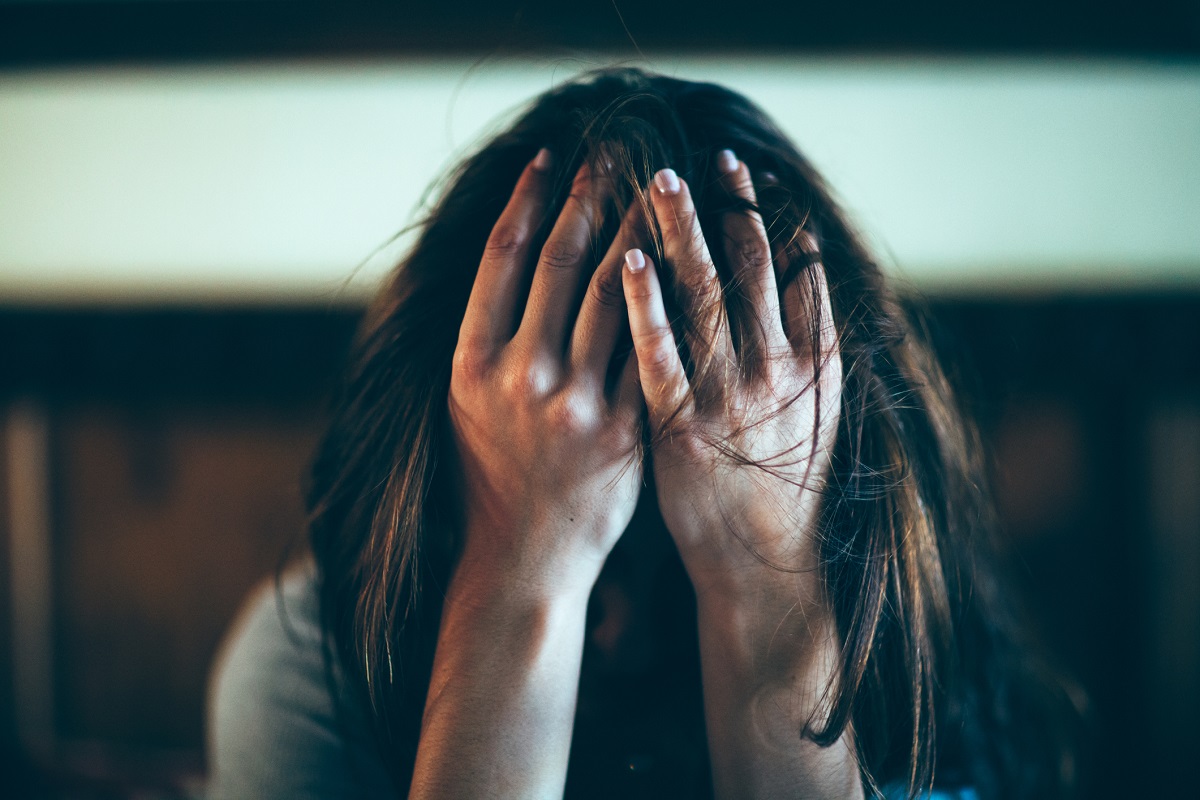Agonizing minutes tick past, and then, quick as they arrived, the symptoms are gone.
What that heck was that? It was so violent, intense and painful, you might have been convinced you were having a heart attack.
Instead, the experience may have come from a different organ altogether – your brain.
You’ve had a panic attack. As much as 4.7% of U.S. adults have these extreme wrestling matches with anxiety. They’re often confused with anxiety attacks, which cover a whole gamut of maladies, but all are less intense with fewer physiological manifestations than panic attacks, which are the granddaddies of them all.
Like anxiety attacks, panic attacks are often triggered by an object, a smell or a memory, but often the impetus is so subtle the attack can seem causeless.
Dr. Ramnarine Boodoo, a child psychiatrist at Penn State Heath Children’s Hospital, and Megan Nguyen, a third-year medical student at Penn State College of Medicine, discuss panic attacks, anxiety attacks, what you can do about them and how they aren’t all in your head.
What is a panic attack?
“A panic attack is a surge of intense anxiety that peaks within minutes,” Boodoo said. It’s at its most intense within about 10 minutes, and then it resolves itself.
Symptoms include:
- Heart palpitations
- Sweating
- Shortness of breath
- Nausea
- Chest pain
- Tingling in the limbs
- Fear of dying or going crazy
The whole experience affects your ability to function normally. Sometimes, one panic attack can feed into the next – and you go through life feeling anxious about when the next storm is coming.
When the panic attacks cause worry about future panic attacks or change your behavior, you may have what doctors call panic disorder.
How is a panic attack different from an anxiety attack?
Anxiety causes a whole spectrum of problems, and nearly everyone feels anxious at one point or another.
When Nguyen first started at Penn State College of Medicine, the crush of hard work and pressure to succeed filled her with anxiety. She had trouble sleeping and worried she’d fail to live up to her own expectations. She sought help through the College of Medicine’s mental health resources and talked it over with her peers.
“It took about a month,” she said, but soon she felt better.
Boodoo has had his own battles with anxiety. As a medical student, he felt some of the same pressures from which Nguyen sought refuge. Even now, despite enjoying caring for patients, Boodoo admits to having significant professional anxiety. “We always want to make sure we care for our patients,” he said, “but nobody is perfect.” He worries over making a mistake, and industry pressures weigh on him.
He eases the tension through mindfulness meditation and confiding in people he trusts.
On the anxiety spectrum, full-blown panic attacks are at the top in terms of severity. The term “anxiety attack” isn’t mentioned in the Diagnostic and Statistical Manual of Mental Disorders. But that doesn’t mean what people refer to as anxiety attacks aren’t real.
“Fear is an emotional response to an imminent threat,” Boodoo said. “Anxiety relates to anticipation of a future threat.”
Anxiety disorders occur when this anticipation causes prolonged distress or impairment. For example, if you experience social anxiety and it affects your ability to go to work, a doctor may diagnose you with social anxiety disorder.
Other disorders include panic disorder, specific phobias, social anxiety disorder, generalized anxiety disorder and separation anxiety disorder.
Boodoo defines an anxiety attack is any sort of episode with higher than normal anxiety. So, a panic attack, really, is a subset of an anxiety attack.
During any anxiety attack, patients can feel restless, easily fatigued, have difficulty concentrating, feel irritable and have muscle tension. It can last from minutes to hours. Unlike panic attacks, people can generally function through them.
How do you treat panic attacks?
Doctors can offer psychotherapy and medicine. “We always try to use psychotherapy first,” Boodoo said.
Boodoo suggest strategies to help his psychotherapy patients during a panic attack, such as:
- Deep breathing
- Visualization exercises
- Self-reassurance (understanding that you’re in a safe place, and even though you’re having a panic attack, it will pass)
If you know someone experiencing a panic attack, it’s important not to say, “Don’t worry.”
“They’re going to worry,” Boodoo said. “It’s that intense.” You can actually add to the angst of the moment by suggesting they stop doing the very thing they’re unable to in the moment.
Instead, let the person suffering the attack know you’re there for them and you’re going to help them through it.
The best studied form of psychotherapy for all anxiety disorders, including panic disorder, is cognitive-behavioral therapy, Boodoo said. This form of therapy tries to reshape thought patterns and types of mental conditioning.
What kinds of medicine work?
Ordinarily, doctors only prescribe psychiatric medications to people experiencing something like a panic disorder. If you’ve just had one episode, or if you’re experiencing a lower-level anxiety problem, pills might not be the answer.
Medications for panic attacks usually fall into two categories.
- Antidepressants – specifically Selective Serotonin Reuptake Inhibitors. Food and Drug Administration (FDA)-approved varieties include sertraline or Zoloft, paroxetine or Paxil, and fluoxetine or Prozac. Patients take these pills every day, and over time they decrease the frequency of panic attacks – though you may still experience them. You can start noticing them working in two to four weeks.
- Rescue drugs – These are taken during or at the onset of a panic attack and work fast and alleviate the symptoms. FDA approved rescue drugs include benzodiazepines such as clonazepam or Klonopin and alprazolam or Xanax. Doctors often turn to two drugs which aren’t FDA approved, because they aren’t addictive and safer in overdose: hydroxyzine or Vistaril and clonidine or Catapres.
But pills don’t work as durably as talking, with cognitive behavioral therapy generally considered to be longer-lasting.
If you go off the pills, the panic attacks can return.
If you get to what’s causing your anxiety, you have a better chance of making it go away permanently.
Related content:
The Medical Minute is a weekly health news feature produced by Penn State Health. Articles feature the expertise of faculty, physicians and staff, and are designed to offer timely, relevant health information of interest to a broad audience.



